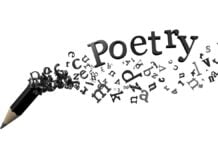Close reading, paraphrasing, and summarising are interconnected skills that enhance comprehension, analysis, and communication. Close reading helps readers delve deeper into the text, identifying key elements, themes, and distinctions between facts and opinions. Paraphrasing allows for rephrasing content for clarity and adaptation while summarising is the process of condensing large volumes of information into its essential points.
Close Reading
Close reading is a fundamental skill for analysing and understanding a text on a deeper level. It involves careful and detailed examination of the content to draw conclusions, interpret implicit meanings, and uncover underlying messages. By closely analysing the author’s language, ideas, and arguments, readers can critically engage with the text, evaluate its content, and form judgements.
One key aspect of close reading is distinguishing between facts and opinions. A fact is a statement that can be objectively verified as true or false, such as “The Sun rises in the East.” An opinion, however, reflects personal beliefs or preferences, such as “Swimming is an enjoyable exercise.” Opinions are subjective and vary from person to person. Understanding this distinction allows readers to critically evaluate whether the author supports arguments with sufficient factual evidence or relies heavily on personal views.
Strategies for Close Reading
Close reading involves analysing various elements of a text, including word choice, syntax, structure, and literary devices. For example, scrutinising the author’s tone, metaphors, or use of repetition can reveal nuances in meaning. Asking critical questions about the text, such as the author’s intent, the purpose of specific details, and the validity of arguments, helps to uncover deeper insights. Through this process, readers can identify themes, assess the author’s perspective, and better understand the overall message of the text.
Paraphrasing
Paraphrasing is the act of rewording or rephrasing a sentence or passage to present the same meaning in a different way. It involves simplifying or clarifying the original text while retaining its core ideas and intent. Paraphrasing is helpful for ensuring understanding, adapting content for a new context, or avoiding plagiarism in academic or professional writing.
Techniques for Effective Paraphrasing
To paraphrase effectively, begin by thoroughly reading and understanding the original text. Breaking the content into smaller sections can help in simplifying complex ideas. Using synonyms to replace keywords, adjusting sentence structures, and transforming sentence types (E.g., active to passive voice) can reframe the text while maintaining its meaning. However, it is crucial not to alter the core message or introduce new ideas.
After rephrasing, the accuracy of the paraphrased version must be checked against the original text to ensure no key details are omitted or misrepresented. The final step involves editing for grammatical correctness and clarity. For instance, “Melancholy” might be paraphrased as “a feeling of sadness” in a way that retains its essence while being simpler.
Summarising
Summarising condenses a lengthy piece of content, such as an article, book, or story, into a shorter version focusing on its main ideas. This skill requires sifting through large volumes of information, identifying and extracting only the most relevant points. A well-written summary is concise and representative of the original content’s essence.
Characteristics of a Good Summary
A good summary captures the key ideas of the text without altering its meaning. It is concise, avoiding unnecessary details, yet maintains the essence and specific information that accurately reflects the original content. For example, summarising a chapter of a book involves identifying the main events or themes and presenting them in a shorter, unified format.
Steps for Writing a Summary
- Skim the Text: Identify main ideas and keywords by underlining or making notes. Irrelevant details can be ignored to focus on the core content.
- Construct Sentences: Form sentences that reflect the main ideas using your notes. The summary should be about one-third the length of the original text and written in your own words while preserving the original meaning.
- Use Linking Words: Employ transitional words like “however,” “additionally,“ and “next“ to ensure the summary flows logically and cohesively.
- Verify the Content: Revisit the original text to ensure the summary accurately captures its main points and retains its meaning.
- Proofread and Revise: Check for grammatical errors, proper sentence structure, correct punctuation, and overall clarity. Ensure that the summary is cohesive and free of redundancies.
For example, summarising a news article about climate change might involve identifying the central message (E.g., the impact of rising global temperatures) and the key supporting details (E.g., statistics on temperature increases) and presenting them in a concise, well-structured paragraph.
Mastering close reading, paraphrasing, and summarising is invaluable for academic success, effective communication, and critical thinking. It enables readers and writers to engage meaningfully with texts across various contexts.






























